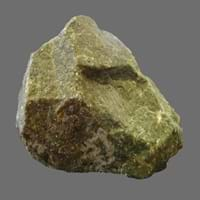Definition
Coquina is a sedimentary rock that is composed either wholly or almost entirely of the transported, abraded, and mechanically-sorted fragments of the shells of molluscs, trilobites, brachiopods, or other invertebrates
Dunite is a green to brownish coarse-grained igneous rock mainly consisting of olivine
Origin
European Foreland Basins
New Zealand
Discoverer
Unknown
Ferdinand von Hochstetter
Etymology
From Concha (Latin)+ Coquina(Spanish) +conch(English)= Couquina (mid 19th century)
From the name of Dun Mountain, New Zealand, + -ite1
Class
Sedimentary Rocks
Igneous Rocks
Sub-Class
Durable Rock, Soft Rock
Durable Rock, Medium Hardness Rock
Group
Not Applicable
Plutonic
Other Categories
Coarse Grained Rock, Opaque Rock
Coarse Grained Rock, Opaque Rock
Texture
Clastic
Phaneritic
Color
Beige, Buff, Orange
Dark Greenish - Grey
Durability
Non-Durable
Durable
Appearance
Layered, Banded, Veined and Shiny
Rough and Shiny
Interior Uses
Decorative Aggregates, Homes, Hotels, Interior Decoration
Decorative Aggregates, Interior Decoration
Exterior Uses
Garden Decoration, Office Buildings
As Building Stone, As Facing Stone, Garden Decoration, Paving Stone
Other Architectural Uses
Curbing
Curbing
Construction Industry
Building houses or walls, Construction Aggregate
As Dimension Stone, Cement Manufacture, Construction Aggregate, for Road Aggregate, Making natural cement, Raw material for the manufacture of mortar
Medical Industry
Not Yet Used
Not Yet Used
Antiquity Uses
Artifacts, Monuments, Sculpture, Small Figurines
Artifacts, Monuments, Sculpture, Small Figurines
Commercial Uses
Creating Artwork
Creating Artwork, Gemstone, Jewelry, Source of Chromite, Platinum, Nickel and Garnet, Source of Diamonds
Types
Not Available
Not Available
Features
Available in Lots of Colors and Patterns, Is one of the oldest rock
Constitutes upper part of the Earth's mantle, Generally rough to touch, Host rock for Diamond, Is one of the oldest rock
Archaeological Significance
Famous Monuments
Data Not Available
Data Not Available
Famous Sculptures
Data Not Available
Data Not Available
Formation
Coquina is a sedimentary rock which is formed when billions of small clam-like seashell, called Coquina, or cockleshell are die and hence are deposited, buried and turns into a rock when pressure is applied.
Dunite is a plutonic ultramafic igneous rock consisting almost m olivine. It can be formed in two ways.
Mineral Content
Apatite, Augite, Bronzite, Calcite, Chert, Chlorite, Clay Minerals, Epidote, Feldspar, Garnet, Micas, Muscovite or Illite
Amphibole, Chromite, Garnet, Magnesium, Olivine, Phlogopite, Plagioclase, Pyroxene
Compound Content
CaO, Carbon Dioxide, Iron(III) Oxide, MgO
Ca, CaO, Fe, Potassium, Silicon Dioxide, Sodium, Titanium Dioxide
Types of Metamorphism
Not Applicable
Burial Metamorphism, Cataclastic Metamorphism, Contact Metamorphism
Types of Weathering
Biological Weathering, Chemical Weathering, Mechanical Weathering
Biological Weathering, Chemical Weathering, Mechanical Weathering
Types of Erosion
Coastal Erosion, Sea Erosion, Water Erosion, Wind Erosion
Coastal Erosion, Glacier Erosion, Water Erosion
Grain Size
Coarse Grained
Coarse Grained
Fracture
Irregular
Irregular
Porosity
Highly Porous
Less Porous
Luster
Dull to Vitreous to Submetallic
Shiny
Compressive Strength
Not Available
Cleavage
Not Available
Imperfect
Toughness
Not Available
2.1
Specific Gravity
1.10-2.24
3-3.01
Transparency
Opaque
Translucent to Opaque
Density
2.8-2.9 g/cm3
2.84-2.85 g/cm3
Specific Heat Capacity
Not Available
Resistance
Heat Resistant, Impact Resistant, Pressure Resistant, Wear Resistant
Heat Resistant, Pressure Resistant, Wear Resistant
Deposits in Eastern Continents
Asia
Not Yet Found
China, India, Indonesia, Kazakhstan, Russia, South Korea, Thailand, Turkey
Africa
Not Yet Found
Morocco, South Africa
Europe
United Kingdom
Finland, France, Georgia, Germany, Great Britain, Italy, Kazakhstan, Netherlands, Norway, Spain, Switzerland, Venezuela
Others
Not Yet Found
Not Yet Found
Deposits in Western Continents
North America
USA
Canada, USA
South America
Not Yet Found
Argentina, Brazil, Colombia, Ecuador, Venezuela
Deposits in Oceania Continent
Australia
Not Yet Found
New Zealand, Western Australia










